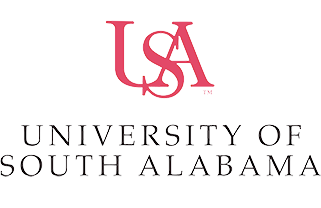
|
Policy No: 2037
Responsible Office: Research Compliance and Assurance
Last Review Date: 11/15/2022
Next Required Review: 11/15/2027
|
Viral Vectors
1. Purpose
The National Institutes of Health (NIH) Guidelines for Research Involving Recombinant or Synthetic Nucleic Acid Molecules (NIH Guidelines) require that Principal Investigators (PIs) seek and obtain Institutional Biosafety Committee (IBC) approval for all viral vectors. As part of the approval process, PIs must submit to the IBC information required by the NIH Guidelines, including the proposed Biosafety Level (BSL).
This policy summarizes IBC requirements for viral vectors currently approved at the University.
2. Applicability
This policy applies to University of South Alabama personnel who generate or use viral vectors and their supervisors, as well as members of the Institutional Biosafety Committee who inspect research laboratories.
3. Definitions
Biosafety Level (BSL): refers to a set of work practices, equipment and facility design appropriate for working with infectious agents.
NIH Guidelines: NIH Guidelines for Research Involving Recombinant or Synthetic Nucleic Acid Molecules.
Replication-defective or Replication-deficient: describes viral vectors defective for one or more functions that are essential for viral genome replication or synthesis and assembly of viral particles.
Transduction: the process by which foreign nucleic acids(DNA, RNA) are introduced into a cell by a viral vector.
IBC: University of South Alabama Institutional Biosafety Committee, composed of faculty, staff, and community members; required by the NIH Guidelines for Research Involving Recombinant or Synthetic Nucleic Acid Molecules.
Viral Vector: Partial viruses that deliver foreign genes into cells.
4. Policy Guidelines
4.1 It is the responsibility of the Principal Investigator to obtain IBC approval prior to starting work with viral vectors.
4.2 Because viral vectors are subject to NIH Guidelines, the IBC must review and approve each project involving viral vectors. The review will include a risk assessment to determine the appropriate biosafety level, personal protective equipment, and disposal methods.
4.3 It is the responsibility of the USA IBC to conduct annual laboratory inspections to ensure personnel are working at the appropriate Biosafety Level.
4.4 It is the responsibility of each person working with viral vectors to use them as approved by the IBC.
4.5 All research personnel working with viral vectors must complete online training. The online module developed and made available by the University of Cincinnati consists of training modules for the specific vector handled. The training module is accessible via the USA Biosafety website.
5. Procedures
5.1 Most vectors are designed to be replication-defective. However, since no design system is perfect, replication-competent virus may be present (unless assayed). Therefore, the Biosafety Level is generally the same as the base virus.
5.2 Special concern is applied to those vectors or modifications that could:
-
- Extend the vector's host range (e.g. VSV-G pseudotyping allows entry into all cell types), tissue tropism, or enhance environmental stability;
- Result in a replication-competent virus (vector design; using a helper virus);
- Integrate the vector into a portion of the genome leading to insertional mutagenesis;
- Integrate an oncogene (e.g. RAS) or silence a tumor suppressor (e.g. p53) in the genome of a person (including in an exposure event);
- Generate a gene drive or selfish genetic element if injected into a person (i.e. a higher chance of a gene being inherited than by Mendelian genetics) - e.g. cassettes encoding Cas9 and sgRNA into a cut site or located adjacent to one another in the genome;
- Deliver a gene encoding a toxin with a low LD50.
5.3 Replication-competent vectors are evaluated on a case-by-case basis.
5.4 To obtain IBC approval, submit IBC protocol and application forms via IRBNet. To facilitate navigating IRBNet, utilize the checklist for submitting a new project to the IBC.
5.5 Exposure Response:
5.5.1 Personnel Exposure
Exposure Examples:
-
-
- Needlesticks or other percutaneous injuries from a contaminated sharp item;
- Splashes to mucous membranes (eyes, nose, mouth);
- Bites/scratches from animals that have been exposed to any recombinant or synthetic nucleic acid material, whether or not the exposure leads to illness.
-
5.5.2 Immediate Response
-
-
- SKIN exposure: Immediately remove contaminated personal protective equipment or clothing and wash the contaminated area with an iodine solution or antibacterial soap and copious water for 15 minutes;
- EYE exposure: Flush the eye with water for at least 15 minutes at an eyewash station;
- Exposure to any affected mucous membranes should be flushed with large amounts of water;
- Notify PI or supervisor. If PI/supervisor is not available, immediately proceed to next step.
-
6. Enforcement
Failure to obtain IBC approval prior to initiation of recombinant/synthetic DNA research will be reported to the Biosafety Officer and IBC Chair. The IBC Chair will prepare a report for review by the Executive Director, Research Compliance and Assurance and Vice President for Research and Economic Development. The report will be sent to the NIH Office of Science Policy within 30 days.
7. Related Documents
7.1 Related Regulations and/or Policies
NIH Guidelines for Research Involving Recombinant or Synthetic Nucleic acid Molecules
CDC/NIH Biosafety in Microbiological and Biomedical Laboratories
7.2 Other Related Documents and/or Procedures
USA IBC Guidelines: Adeno-associated Viruses
USA IBC Guidelines: Adenovirus
USA IBC Guidelines: Alphaviruses
USA IBC Guidelines: Flaviviruses
USA IBC Guidelines: Retrovirus and Lentivirus
USA Biosafety Manual and Exposure Control Plan
7.3 References
